|
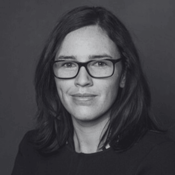
|
Sarah Abbott
- Improving health standards for Queenslanders is a top priority for the state. We saw this
reflected in yesterday’s budget - alongside a strong focus on fiscal repair.
- The current challenge for the State Government is meeting the growing and changing
needs of diverse populations sustainably.
- Advances in medical technology, data analytics and public health innovation give us hope for solutions.
- The panel today knows the challenges all too well - these include rising chronic disease,
ageing populations and workforce shortages.
- More importantly, they lead teams actively working on solutions right now to secure better health outcomes for all Queenslanders.
|

|
Noelle Cridland
- Metro South Health is an organisation with over 21,000 staff and a budget exceeding
$4 billion.
- We’re experiencing unprecedented demand, especially in emergency and chronic
disease services.
- Despite significant challenges, healthcare offers enormous opportunities for innovation.
- Our three main interconnected challenges are workforce, timely access to quality care and managing costs. Addressing these requires a sophisticated, nuanced approach.
- Empowering our talented workforce and fostering strong external partnerships is critical to addressing these challenges and taking advantage of the opportunities we face.
|
|
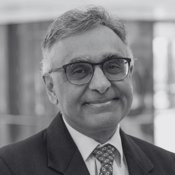
|
Professor Maher Gandhi
- The Translational Research Institute (TRI) is located at the Princess Alexandra and Boggo Road precincts. We have approximately 1,100 staff across four key partners: Metro South Health, Mater Research, the University of Queensland and Queensland University of Technology.
- Our core mission is improving health outcomes through translational research, directly
addressing Queensland’s major healthcare challenges.
|
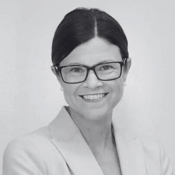
|
Dr Robyn Littlewood
- Health and Wellbeing Queensland is a statutory body established six years ago.
- For the first time, today’s children in Queensland will have shorter lifespans than their parents.
- There is a 30-year gap in median age of death between metropolitan and regional demographics: 82 years in Brisbane, but only 52 years in some far northern areas.
- One in two Queenslanders now live with chronic diseases like obesity, heart disease stroke or cancer.
- Critically, 40% of Queensland’s health burden is fully preventable.
- We have one of the best healthcare systems globally, yet our current funding model doesn’t adequately support prevention.
- We need to fundamentally change around how we fund and deliver prevention, driving
innovation and collaboration across the sector.
|
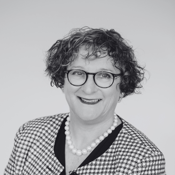
|
Prof. Karen Nelson
- The University of Southern Queensland has about 22,000 students deeply embedded across regional communities from Ipswich to Toowoomba and western and southern Queensland.
- Our university actively addresses healthcare workforce shortages, particularly in regional
areas where 3 out of 5 shortage areas exist.
- As a response to this challenge, we have embedded rural and regional placements in all
allied health programs, preparing students for real-world regional healthcare settings.
- USQ piloted an innovative, complete nursing program in Charleville, allowing students to
fully train locally, leading to high local workforce retention.
- Recently, we’ve launched the first physiotherapy program offered by a regional university
in Toowoomba.
- We also partner closely with health industry providers to deliver cadetship degrees,
blending theoretical learning and workplace experience to effectively prepare students as
healthcare professionals.
|
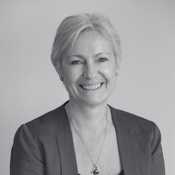
|
Dr Ana Svensson
- Novo Nordisk has been focused on addressing chronic diseases globally for 100 years, and
in Australia for 50 years.
- Chronic diseases like type 2 diabetes, obesity and cardiovascular conditions account for
91% of preventable deaths and 85% of life that is lost due to illness in Australia.
- Currently, 61% of Australians live with at least one chronic disease, creating a significant
burden on individuals, society and healthcare systems.
- We tackle chronic disease in two ways - through innovative treatments and prevention.
- We recently made a federal budget submission advocating for increased investment in
preventative measures and stronger partnerships between the public and private sectors – to allow communities to have a role in co-designing solutions.
- Government plays a critical role in reshaping the healthcare system through early intervention, prevention investment and facilitating access to innovative treatments.
• Our ultimate goal is to help create environments that reduce the number of patients and
increase the number of people enjoying longer, healthier lives
|
|
The Health Service you lead serves a rapidly growing and changing population. Tell us about the
approaches and initiatives of your health service which give you the most hope that we can continue to deliver sustainable healthcare to Queenslanders?
|

|
Noelle Cridland
- I’m naturally optimistic about healthcare improvements. Our workforce has extraordinary
capability; my role, alongside our executive team, is to create environments that empower
staff to develop innovative solutions.
- Workforce shortages and turnover, especially in nursing and midwifery, are significant
challenges for the industry. We’re seeing shorter career spans and increasing part-time arrangements.
- 75% of our nursing and midwifery staff now work part-time, which increases onboarding
and ongoing education demands within the same budget constraints.
- To support a strong workforce, we partner with universities to support graduates coming into the workforce.
- Additionally, to boost workforce engagement, we’ve recently launched clinical networks
led by senior clinical leaders, generating exceptional engagement and practical solutions.
- We’re also working to minimise avoidable hospital visits, and in doing so are improving
access to health services. This includes diversifying roles - such as physios managing back pain or nurses prescribing medication - to deliver timely, appropriate care.
- A key challenge is controlling costs, as labour comprises 75% of our budget - we carefully review workforce efficiency, procurement, supply chains, fleet management and digital tools to carefully manage this.
- We’re trialling innovative technologies like Ambient AI, which automatically generates
medical records, patient notes and GP letters from one interaction, easing clinician
workload and improving efficiency.
- While we’re actively exploring these technology-led approaches, we prioritise cautious
adoption to ensure patient care quality remains uncompromised.
|
|
How do we train and educate our workforce needs to change to meet the future needs of our population?
|

|
Prof. Karen Nelson
- A key focus of our training programs is building resilience in health workers and
emphasising interdisciplinary teamwork.
- We intentionally design courses and activities where students from various disciplines
(e.g., physiotherapy, nursing, medicine and occupational therapy) learn collaboratively to
solve patient problems.
- We ensure students understand and can work across their full scope of practice, especially at intersections where roles overlap, preparing them for the future healthcare environment.
- Regional training is critical - about 80% of students trained regionally will remain in those
communities. This is an important solution for directly addressing workforce shortages
and poorer health outcomes in the regions.
- Our Charleville nursing program is the first fully remote nursing program in Australia,
graduated its first cohort in 2024, with 80% of students staying locally after graduation.
- Successful regional initiatives like this must be expanded across all health disciplines,
including medical training, through collaborations like our medical pathway partnership
with UQ.
|
|

|
Sarah Abbott
- When we spoke to clinicians across the country for the Unleashing the Potential of the
Health Workforce report, it became clear almost immediately that there’s still too little
understanding of what other clinical professionals do.
- That lack of understanding undermines the care team’s ability to work together and
harness their full potential to meet community needs.
- Interdisciplinary approaches to education are fundamental to addressing this and building more cohesive teams.
|
How do you make sure the work of TRI is focused on solving the most pressing problems facing our
healthcare system? |
|

|
Professor Maher Gandhi
- We don’t tell our researchers what to research, but rather we encourage them to think
about how to research.
- TRI is focused on translation. While discovery is important – such as understanding molecular pathways and biology, which has contributed to a massive revolution in precision medicine - we encourage researchers not just to aim for publication, but to
think about how to translate their research into the clinic.
- We have a whole range of exciting projects right now. For example, a University of Queensland partnership where Professor Peter Soyer developed a 3D imaging system
that takes 92 photos in one second to map patients’ moles, detect melanomas and plan treatment.
- Thinking outside the box is critical for this translation. One of our smartest professors,
Gene Tyson from QUT, looked at mental health in army recruits in a non-traditional way.
• He compared new recruits undergoing basic training, with elite SAS soldiers, studying
their gut bacteria and immune systems to find links to resilience.
- He’s working on culturing those bacteria - or isolating the chemical compounds that they
secrete - to potentially treat anxiety and depression.
- These ‘out-of-the-box’ developments are exciting and rely on interdisciplinarity to
be achieved.
|
Evidence tells us that building the health and wellbeing of our community must begin long before an
individual presents at hospital. In the context of the growing pressure on our health system, how is the work of Health and Wellbeing Queensland part of the solution?
|

|
Dr Robyn Littlewood
- The world and our health landscape have fundamentally changed - we must approach
healthcare differently, especially prevention.
- One in two people now live with chronic disease, a situation that will worsen significantly
without intervention. Importantly, people who live with chronic diseases can often have
up to six.
- Prevention is essential: 40% of Queensland’s health burden is preventable by addressing
SNAPO risk factors (smoking, nutrition, alcohol, physical activity and obesity).
- Type 2 diabetes in children – which was previously unheard of - is now common alongside conditions like fatty liver and high cholesterol, signalling an urgent need for early prevention.
- Most chronic diseases - 90% of type 2 diabetes, 80% of heart disease and 40% of cancers - are preventable, yet public awareness and education remain insufficient.
- Prevention solutions must be quick, accessible and user-friendly, reflecting the
immediate needs of today’s population, including apps, phone-based coaching and ondemand services.
- Successful pilots like “Wellness My Way” in Roma and programs in Bundaberg and Logan show promising results and community engagement. Roma alone saw 500 voluntary participants within nine months – driven by word-of-mouth adoption.
- We have also found that our Logan Healthy Living program delivers strong returns; for every dollar invested, there’s a $1.82 return, 10% fewer hospital admissions and bed days and a 30% drop in emergency presentations.
- Scaling such prevention programs statewide could significantly reduce healthcare
burdens, allowing hospitals to focus on acute care where they are most needed.
|
|
Novo Nordisk is a global company committed to preventing chronic disease, particularly through
building partnerships to drive action and make cities healthier. Could you tell us more about that?
|

|
Dr Ana Svensson
- We recognise that chronic diseases like type 2 diabetes, obesity and cardiovascular
issues are closely linked to our living environment.
- At Novo Nordisk, we launched the global “Cities for Better Health” program, active in around 50 countries, and have brought it to Australia - specifically to Logan in Queensland - where there’s significant unmet health needs.
- We’re working in partnership with community groups to change environments and promote healthier lifestyles.
- One initiative, partnered with Logan Together and the Australian Institute for International Play, involves innovatively redesigned playgrounds to encourage children’s physical activity, receiving national recognition.
- Another partnership with Stephanie Alexander Kitchen Gardens programs educates young families about nutrition and healthy lifestyle choices, aiming to build lifelong
healthy habits.
- Additionally, we’re collaborating with Metro South Health and Logan Endocrine and
Diabetes Services to directly address local risk factors for chronic diseases.
- We believe strongly in prevention and long-term solutions. Currently, only 1.7% of the Australian health budget is spent on prevention, which is significantly lower than in many
other countries.
- Our approach is about adapting globally proven initiatives locally, working collaboratively
to make sustainable and meaningful impacts in Australian communities.
|




















